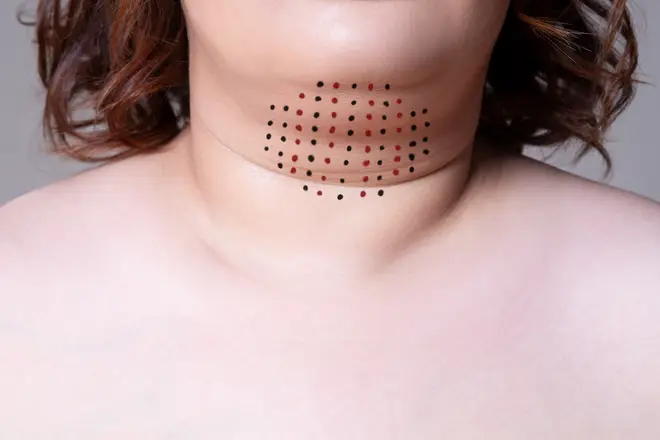What is intralipotherapy and can fat dissolving injections get rid of double chins?
17 November 2020, 02:38 | Updated: 17 November 2020, 02:39

The popular procedure which is often referred to as Kybella is becoming more and more accessible here in the UK, as many consider it a great cost-effective alternative to liposuction.
Many people are insecure of their stubborn excess fat, and despite their best efforts to lose weight and shed the pounds, sometimes it won't budge from certain areas.
Fat dissolving injections is a procedure that's starting to make waves in the UK. It's been around for a while, and the injectable treatment - commonly referred to as Kybella in the States - is known to have incredible long term effects with minimal downtime.
Nurse Aaron Crawford from ATYU, London's Ultimate Skin Concierge spoke to us to explain a bit more about the popular procedure, and how it can be used to tackle a lot more than just your double chin.

What are fat dissolving injections?
Fat dissolving injections is the generic term for Intralipotherapy which essentially is the injection of an acid into stubborn pockets of fat to remove the fat tissue.
The substance used is Deoxycholic Acid, which is a man-made substance naturally found in your body that helps to absorb fat.
The acid works by destroying the fat cells in the areas injected in the body, results are most noticeably seen under the chin, commonly known as a ‘double chin’.
The process involves a series of injections to target the fat cells in whichever area is being treated and also tightens the skin.
The treatment itself is not painful and has minimal downtime in most cases.

What parts of the body can you get them done on?
Intralipotherapy can essentially be used anywhere on the body where there is stubborn pockets of fat.
These include lower face, double chin, bingo wings including upper arm, bra fat, gynecomastia, abdominal fat, love handles, lower buttocks, inner thighs, knees and ankles.
Is it a good alternative to liposuction?
Intralipotherapy and Liposuction both have the same goal – to remove excess fat from the body.
Liposuction is an invasive surgery under general anaesthesia to remove stubborn pockets of fat, however, it's more commonly used to sculpt a person’s body shape.
Intralipotherapy is a non-surgical alternative to liposuction, no general anaesthesia is required, the client can continue their day as normal with little to no downtime.
There are benefits of each procedure, a plastic surgeon will typically favour liposuction as it is a one-time procedure and achieves great results, however, this can be costly for the average person.
Intralipotherapy is a more reasonable option for most people as there are less risks with this treatment than liposuction and is affordable to most.

How long does it take to see results?
When the deoxycholic acid is injected into the fat cells, the product immediately starts to destroy the fat cells in that area, this causes a reaction in your body that will rush blood and oxygen to this area which results in swelling.
This is your body’s natural reaction to the deoxycholic acid being injected into the body.
Due to this swelling, results may not be seen for up too 14 days post treatment.
Results are not guaranteed after the initial treatment meaning subsequent treatments are required.
Depending on the area being treated, a client may require two to six sessions before seeing results.

How many sessions do you need?
The amount of sessions required is dependant on the area being treated, smaller areas like the lower face and double chin require up to two sessions whereas larger areas such as abdomen or love handles may require up to eight sessions to see results a client is happy with.
How long do the effects last?
The results of Intralipotherapy are ‘permanent’ and ‘lifelong’.
I’ve put these in brackets as the fat cells in that area have been destroyed meaning no fat cells can grow in that area as long as the client maintains a healthy lifestyle throughout their life.
How much does it cost?
With us at ATYU, treatments start at £600 for a course of three sessions.


































